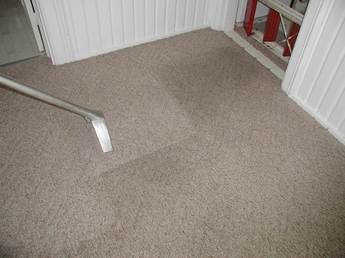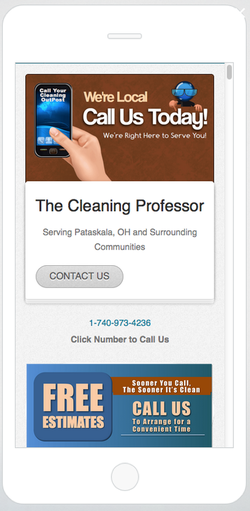
Olefin carpet, especially in the common Berber style, causes many cleaning technicians to groan.
Why? There has to be a good reason. After all, it's just carpet maybe 1/2 inch thick, right? And these same technicians have powerful portables or truckmounts, which should make easy work of any carpet cleaning job.
It's all about the style or weave of the carpet and the type of fiber itself.
Since most cleaning today is done via hot water extraction with a traditional floor tool, cleaners find the Berber style (whether wool, nylon or olefin) to make the physical action of cleaning difficult. When the cleaning tool (wand) skips and jumps over the carpet, overwetting occurs and this leads to a carpet turning ugly a day or two later, in addition to the inevitable recurring spots.
To overcome this challenge, changing your cleaning direction can help, as well as the use of wand glides and using different cleaning tools, such as electric rotary extractors. Using a bonnet machine with an absorbent pad can help remove more moisture and soils. An airmover used immediately after cleaning each area dries the carpet faster and leads to less wicking.
Then there is the fiber type. Olefin resists water, it's not absorbent. This means your cleaning solution may follow the yarn shaft right down to the backing of the carpet, resulting in overwetting and potential wicking of soils and spots. That's why the callbacks on olefin are much higher than other fiber types.
After determining if a Berber is an olefin Berber, you might consider using less moisture in your cleaning process (perhaps one of the various low moisture cleaning methods).
Olefin's characteristics
Since most Berbers have a high olefin fiber content, that's what we will highlight in the remainder of this technical bulletin.
As most carpet cleaners know, olefin fibers like oil. If oil is tracked onto an olefin carpet from the garage, street or anyplace that has high oil content, you have a tough job to contend with. That''s why olefin is a bad choice near floors with high oil content ... Olefin loves oil, but resists water.
Olefin does have some good characteristics. It''s naturally stain resistant. Most water based spills have no effect on olefin. It''s extremely colorfast (due to solution dyeing).
Some good places to put olefin carpet: A room where water is tracked in, around a swimming pool, a room where the kids spill Kool Aid, laundry rooms, etc. - all because olefin is resistant to water and chemicals.
Olefin has weak resiliency and is a weaker fiber compared to nylon, and will matt and flatten down in traffic lanes in a short period of time. Abrading creates another problem as this can look like soil.
Remember these negative characteristics so you can explain this to your customers or facility management. There''s really nothing you can do as a cleaner if matting or abrading occurs.
Cleaning results
Your typical cleaning process is often going to disappoint you when it comes to olefin Berbers. (Remember: Dry vacuuming before cleaning will give you better cleaning results.) After all, isn't it true that most carpet isn't cleaned until it looks really soiled?
There are many olefin-specific preconditioners on the market today. Typically, they have more surfactancy, emulsification ability and solvency to remove oily soils, and higher pH. You can use virtually any chemical on olefin without fear of harming the fiber. You can even use household bleach, or sodium hypochlorite, for spot and stain removal, although most companies do not allow that type of chemical to be used on carpet.
But you can use other bleaches - safely.
Add oxygen, reduce problems
Many olefin carpet, especially Berbers, suffer not only from oil tracking, but also wicking. The use of oxygen in your cleaning process helps with this problem.
This would be either liquid peroxide or sodium percarbonate (a powdered-type of peroxide). Liquid peroxide is fairly neutral on the pH scale, and safe for many fibers. But some strengths are harmful to the skin, so be sure to inquire about that from your supplier. Sodium percarbonate is very easy and safe to use, except when high alkalinity is a concern. The problem is the end result of mixing sodium percarbonate in water: Alkalinity is released, which activates and accelerates the peroxide element so better bleaching can take place. That's why you shouldn't use it on stain resistant carpet or natural fibers, but it's acceptable to use on olefin.
The results you will obtain with a safe oxidizing bleach product is impressive, as many issues are solved, such as that dull appearance or yellowing from asphalt driveways, etc.
Oxidizers also attack smaller soil particles, a huge plus in your cleaning system.
Prespray and rinse away worries
Another tool at your disposal is the use of encapsulation presprays and rinses. An encapsulation presray/rinse helps limit the return of ugly traffic lanes and recurring spots. It means your chemistry is actually a good residue, not a soil attracting residue, and the carpet may remain clean longer.
Using an encap rinse by itself does have anti-soiling and anti-wicking properties, but not as much as the "one-two" punch of preconditioning and rinsing with encap chemistry.
Some companies produce an anti-wicking agent (using the same encap principle) that can be applied after cleaning, if you prefer to continue to use your traditional rinse.




